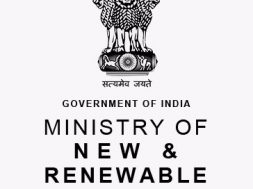
The Queensland government released its Hydrogen Industry Strategy in May 2019, outlining its commitment to delivering a sustainable hydrogen industry by 2030 to provide opportunities for domestic users and develop new export markets. The strategy focused on renewable hydrogen or green hydrogen, which is produced by renewable energy or from residual biomass.
Hydrogen has advantages over other energy carriers, such as batteries, as it produces more energy per unit of mass. Hydrogen can also ‘service’ several markets, including liquid transport markets, which because of its higher energy yield than batteries, ensures that vehicles can travel longer distances before refuelling is required. This is essential for Queensland’s agriculture sector due to a reliance on regional and remote transport, particularly for heavy vehicles where efficient fuelling is essential for logistic efficiency. In regional and edge-of-grid industry applications, hydrogen can use energy storage for stabilisation of the electricity grid to smooth intermittent loads from solar and wind.
Because of the intermittent use of energy, particularly for irrigation, many farms produce excess electrons from their renewable energy installations which are administratively difficult to feed back into the grid. Therefore, hydrogen could offer an alternative and productive energy storage for farmers until they are ready to use it. That said, it is technically easier to feed renewables such as solar (electrical energy) into the currently configured electricity grid, as opposed to hydrogen which will require further network augmentation and technology installations. And unlike biomethane, hydrogen cannot be used in existing gas engine and turbines infrastructure.
Hydrogen gas is a versatile energy carrier, but it is not freely available in the atmosphere, it requires significant energy input and technology intervention to produce it, store it and then use it. Electrolytic water splitting is currently considered to be the most feasible method for the industrial manufacture of green hydrogen fuel. However, current technologies require around nine litres of pure water to manufacture 1kg of hydrogen, and that water is then gone forever. CSIRO estimates that production at the level of Australia’s anticipated share of the forecast hydrogen export market in 2030 would require 4.5 gigalitres of water in total and under a high demand growth scenario, an estimated 26.6 gigalitres of water would be needed by 2040 for Australia’s production of hydrogen for exports alone.
Australia is heavily reliant on the importation of liquid fuels and reserves are typically insubstantial. Hydrogen could ensure domestic liquid fuel security, which in turn could provide the agricultural sector with fuel security for harvesting, planting and the food supply chain. Hydrogen can also be used to produce industrial chemicals including ammonia and ethanol which could assist us to be self-reliant for certain fertilisers and other chemicals such as oxygen.
Agriculture needs support now if we are to realise the opportunities from this sector and meaningfully participate by 2030. We need to know the appropriate and cost-effective scale of this technology, how much water will be required, including the opportunity cost of using that water for hydrogen and not crops, and the land area required, noting that as we move from high-density fossil fuels to lower-density renewable energy sources, the footprint (land area) of those technologies is increasing and the loss of irreplaceable high-producing farmland is nearing a tipping point. While hydrogen will provide unique opportunities and potentially a competitive edge for Queensland’s agricultural sector and our regions, we currently have more questions than answers.

















